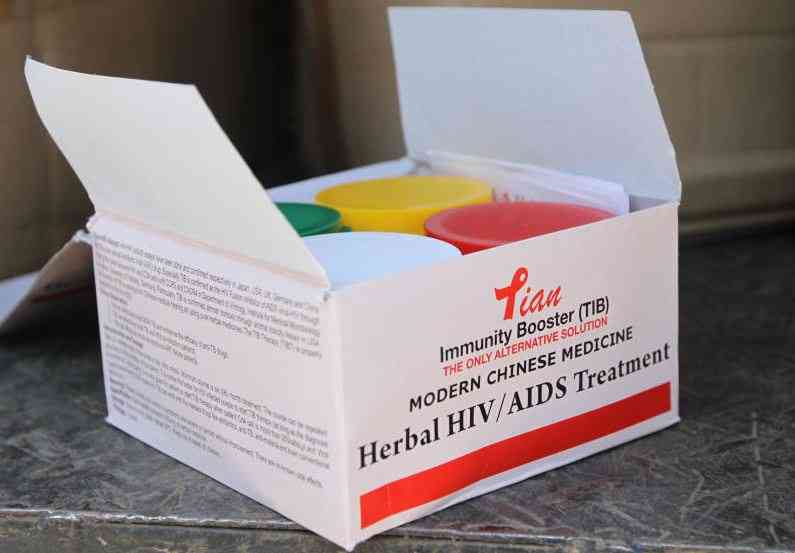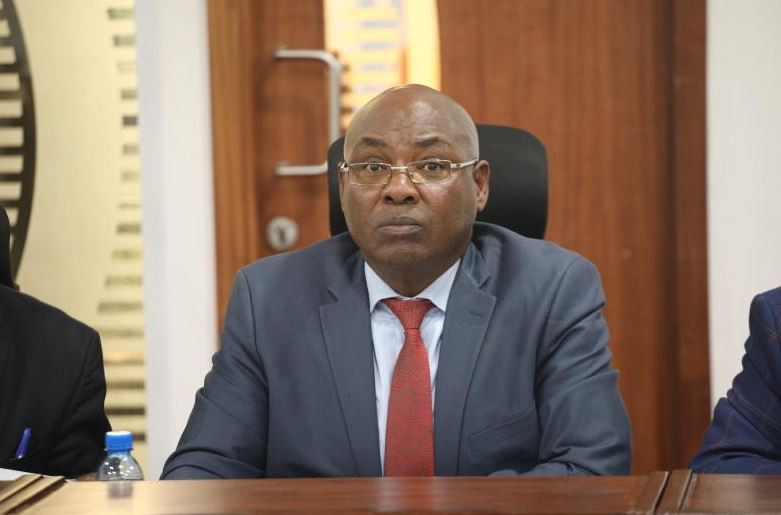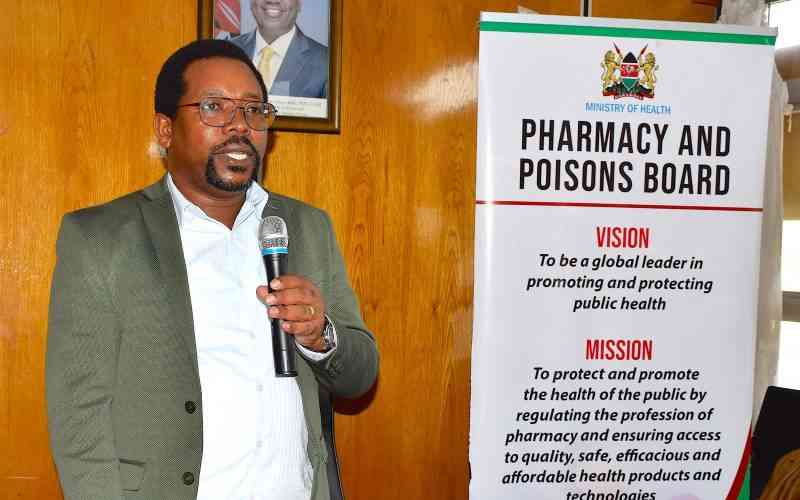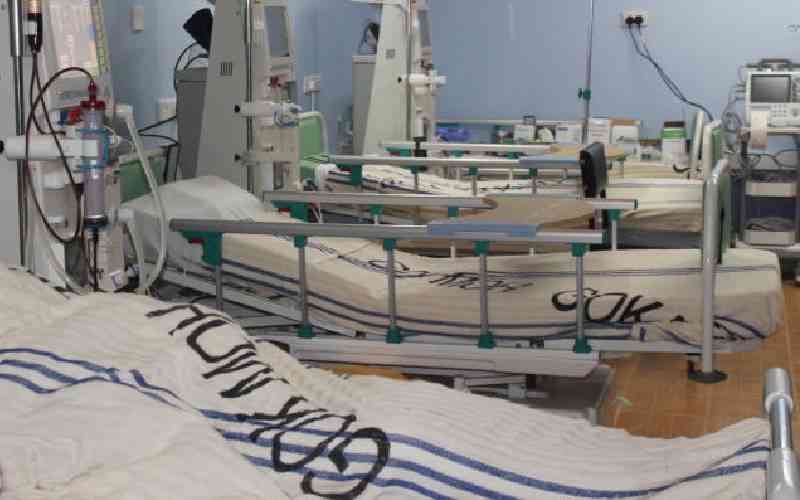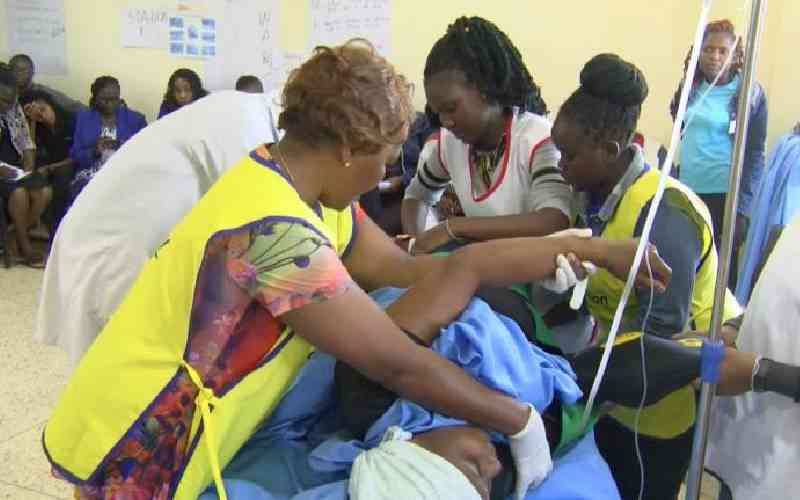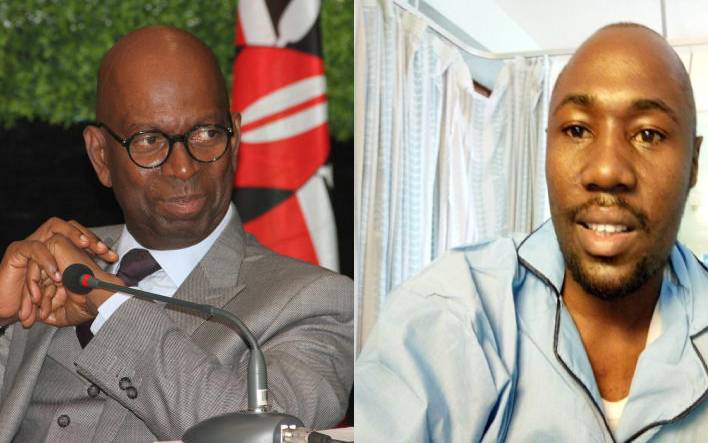
The late Safaricom CEO Bob Collymore (L) and late Weru TV journalist Dennis Omondi (R). Both died of leukemia. A rare type of cancer which affects the bone marrow and blood cells. [File, Standard]
Many will recall the day Bob Collymore settled on the couch to talk with Citizen TV’s Jeff Koinange about his fight with leukemia, a type of cancer that affects the blood cells.
He said that it all began with flu-like symptoms, pain in the bones that would later develop into malaria-like symptoms.
“I had been feeling unwell for some time. I noticed a strange thing…I noticed a pain in the bones of my shin, which is not something you experience unless you kick something hard,” said Collymore, while speaking about symptoms.
The Safaricom CEO said that he was treated for Vitamin D deficiency, perhaps because the doctor may have thought that such is the problem associated with bone pains.
Having done over 30 tests at a cost of Sh100,000 at Nairobi Hospital under the attention of Dr David Silverstein, The Safaricom boss opted to fly to UK to get further diagnosis and treatment.
In the UK, a haematologist diagnosed him with Acute Myeloid Leukaemia, a rare, but curable type of cancer.
He said he wasn’t disturbed by the news because he had to live with the reality that leukemia was a stubborn form of cancer but he could not afford to sit pretty as it advanced fast.
“Being diagnosed with cancer for me was not such a big deal. If you get cancer, you can’t undo it,” he said.
As Bob Collymore narrated his fight against cancer, six earlier Weru TV journalist Dennis Omondi had died fighting the same disease.
His death came suddenly just a few days after he had shared a video of him appealing for financial help to go for advanced treatment in India.
A story by the Standard captured the late Omondi’s torrid experiences with the rare type of cancer. It was the same narrative. It all began like flu that was suspected to be malaria before manifesting into something strange.
Unlike Collymore, who was suspected to be suffering from Vitamin D deficiency, besides having flu; Omondi was treated for flu and persistent fever. He later resorted to home remedies like lemon and honey before his condition deteriorated.
“Then I noticed some swelling at the back of his neck. It would move if you touched it. Though it was not painful, for precaution, I asked him to go back and get checked,” said Nancy Mwanza, Omondi’s wife when she talked of his illness.
He died after seven months of ailing as he could not raise Sh12 million for treatment in India.
What to look for?
According to Mayo Clinic.org, Leukemia exists in many forms depending on how it initiates abnormal blood cell growth. However, there are shared symptoms across the categories. Some of them include:
• Fever or chills
• Persistent fatigue, weakness
• Frequent or severe infections
• Losing weight without trying
• Swollen lymph nodes, enlarged liver or spleen
• Easy bleeding or bruising
• Recurrent nosebleeds
• Tiny red spots in your skin (petechiae)
• Excessive sweating, especially at night
• Bone pain or tenderness
Leukemia is mainly initiated by the DNA mutations in the blood cells.
“In general, leukemia is thought to occur when some blood cells acquire mutations in their DNA — the instructions inside each cell that guide its action. There may be other changes in the cells that have yet to be fully understood that could contribute to leukemia,” notes MayoClinic.org.
It further states: “Certain abnormalities cause the cell to grow and divide more rapidly and to continue living when normal cells would die. Over time, these abnormal cells can crowd out healthy blood cells in the bone marrow, leading to fewer healthy white blood cells, red blood cells, and platelets, causing the signs and symptoms of leukemia.”
There are two types leukemia in primary classifications. They include Acute Leukemia and Chronic Leukemia.
"Acute lymphocytic leukemia occurs when a bone marrow cell develops errors in its DNA. The bone marrow produces immature cells that develop into leukemic whiteblood cells called lymphoblasts. These abnormal cells are unable to function properly, and they can build up and crowd out healthy cells,” notes MayoClinic.org.
It adds: “Chronic leukemia involves more mature blood cells. These blood cells replicate or accumulate more slowly and can function normally for a period of time. Some forms of chronic leukemia initially produce no early symptoms and can go unnoticed or undiagnosed for years.”
Risk factors
There are no known direct causes for the disease. MayoClinic.org reveals that genetic disorders like Down’s Syndrome, previous cancer treatment, smoking, having cancer in the family lineage and exposure to certain chemicals may increase the risk.
When suspected to be having the disease, doctors will recommend physical exam, haematological (blood) test and bone marrow test for diagnoses.
Its treatment ranges from chemotherapy, biological therapy to boost immunity, radiation therapy to stunt abnormal cell growth and much more.
 The Standard Group Plc is a multi-media organization with investments in media platforms spanning newspaper print
operations, television, radio broadcasting, digital and online services. The Standard Group is recognized as a
leading multi-media house in Kenya with a key influence in matters of national and international interest.
The Standard Group Plc is a multi-media organization with investments in media platforms spanning newspaper print
operations, television, radio broadcasting, digital and online services. The Standard Group is recognized as a
leading multi-media house in Kenya with a key influence in matters of national and international interest.


